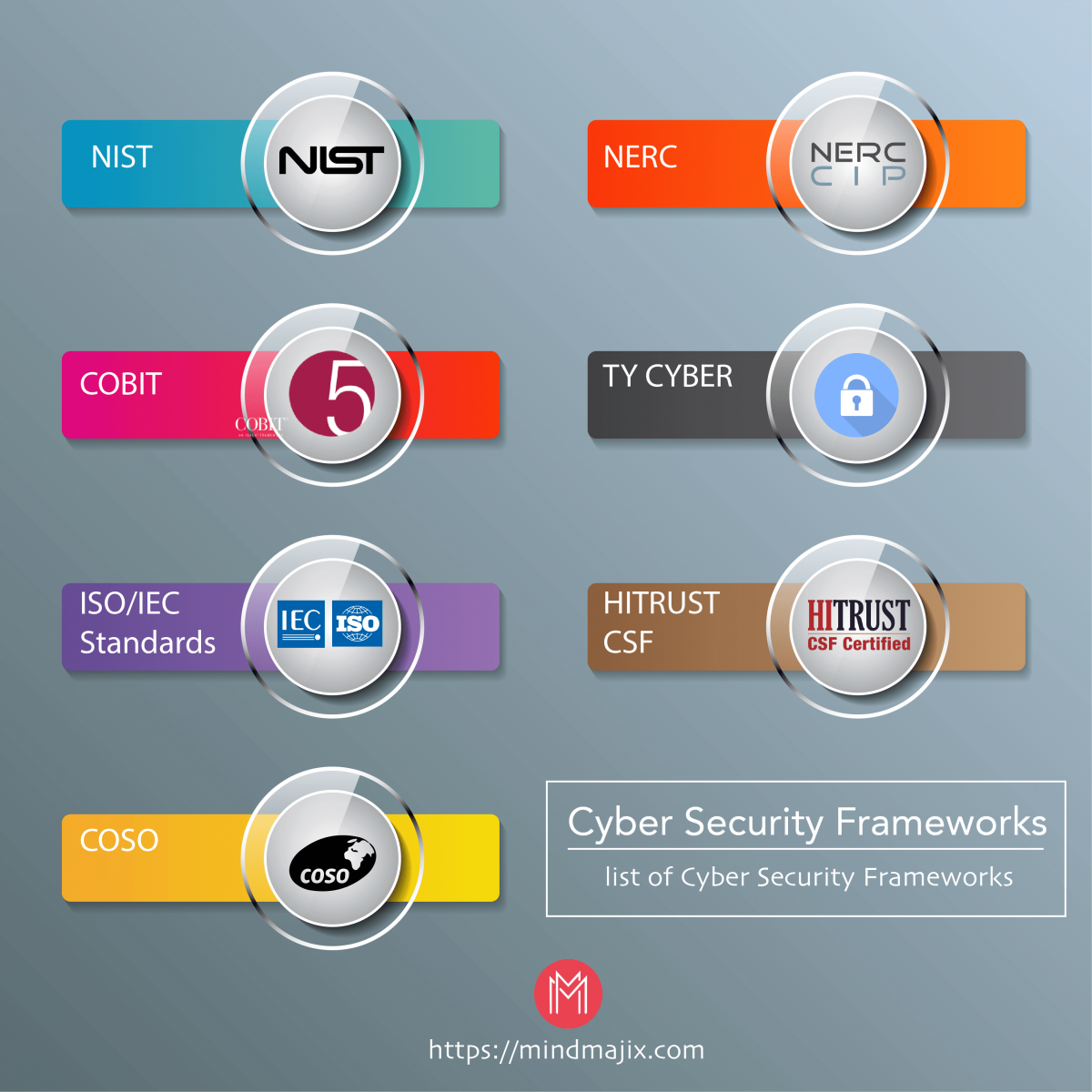What are the 4 types of security? This question is at the heart of safeguarding our digital and physical lives in today’s interconnected world. From the locks on our doors to the firewalls protecting our networks, security measures are woven into the fabric of our existence. These measures are not just about preventing theft or damage; they are about preserving our privacy, protecting our critical infrastructure, and ensuring the smooth operation of our businesses and personal lives.
This exploration delves into four distinct but interconnected realms of security: physical, network, application, and data. Each type presents unique challenges and opportunities, demanding a comprehensive approach to secure our assets and information.
Physical Security

Physical security is the foundation of any robust security strategy, safeguarding your assets and protecting them from unauthorized access, damage, or theft. It’s like the first line of defense, ensuring that your valuables are physically protected.
Importance of Physical Security Measures
Physical security measures are crucial for protecting assets, preventing unauthorized access to sensitive areas, and minimizing the risk of theft, vandalism, and other security threats. These measures create a physical barrier between your assets and potential threats, making it harder for unauthorized individuals to gain access.
Examples of Physical Security Measures
Physical security measures can take many forms, and the specific measures implemented will depend on the nature of the assets being protected and the level of risk. Here are some common examples:
- Locks: Locks are a fundamental physical security measure, used on doors, windows, and other access points to prevent unauthorized entry. They can be simple or complex, depending on the level of security required.
- Fences: Fences serve as physical barriers to deter unauthorized entry and provide a visual deterrent to potential intruders. They can be made of various materials, including wood, metal, or concrete, and can be topped with barbed wire or other security features.
- Security Guards: Security guards provide a visible presence, deterring potential threats and responding to security incidents. They can patrol areas, monitor surveillance systems, and enforce security protocols.
- Surveillance Systems: Surveillance systems, such as CCTV cameras and motion detectors, can monitor activity, detect potential threats, and provide evidence in the event of a security breach.
- Lighting: Adequate lighting can deter crime by illuminating areas and making it harder for intruders to hide.
Role of Physical Security in Preventing Unauthorized Access
Physical security plays a vital role in preventing unauthorized access to sensitive areas, such as data centers, laboratories, or secure storage facilities. It helps to create a layered approach to security, making it more difficult for intruders to bypass multiple security measures. For example, a secure facility might have a perimeter fence, security guards, and access control systems, all working together to prevent unauthorized entry.
Simple Physical Security Plan for a Small Office, What are the 4 types of security
Here is a simple physical security plan for a small office:
- Install strong locks on all doors and windows. Consider using high-quality deadbolt locks for added security.
- Install a security system with motion detectors and alarms. This will deter potential intruders and alert you to any unauthorized entry.
- Install security cameras to monitor key areas. This can help deter crime and provide evidence in the event of a security breach.
- Implement a policy for visitors and employees. Ensure that all visitors are checked in and escorted by an employee.
- Keep all sensitive documents and equipment locked away in secure areas.
- Educate employees about security best practices. This includes awareness of common security threats and how to report suspicious activity.
Network Security
Network security is the practice of protecting computer networks from unauthorized access, use, disclosure, disruption, modification, or destruction. It is essential for protecting data, systems, and users from cyber threats, which can include malware, hacking, phishing, and denial-of-service attacks.
Common Network Security Vulnerabilities and Mitigation Strategies
Network security vulnerabilities are weaknesses in a network’s design, configuration, or implementation that can be exploited by attackers. Some common network security vulnerabilities include:
- Weak passwords: Using easily guessed passwords or reusing the same password across multiple accounts can make it easier for attackers to gain access to a network.
- Outdated software: Software vulnerabilities can be exploited by attackers to gain unauthorized access to a network.
- Unsecured Wi-Fi networks: Public Wi-Fi networks are often unsecured, making them easy targets for attackers.
- Lack of network segmentation: Networks should be segmented to limit the impact of a security breach.
- Misconfigured devices: Devices that are not properly configured can be vulnerable to attacks.
To mitigate these vulnerabilities, organizations and individuals should implement the following strategies:
- Use strong passwords: Passwords should be at least 12 characters long and include a mix of uppercase and lowercase letters, numbers, and symbols.
- Keep software up to date: Regularly update software to patch security vulnerabilities.
- Use a VPN: A VPN encrypts data traffic, making it more difficult for attackers to intercept.
- Segment the network: Separate sensitive data and systems from less sensitive ones.
- Configure devices properly: Ensure that devices are properly configured to minimize security risks.
Role of Firewalls, Intrusion Detection Systems, and Anti-Malware Software
Firewalls, intrusion detection systems (IDS), and anti-malware software are essential tools for network security.
- Firewalls: Firewalls act as a barrier between a network and the outside world, blocking unauthorized access. They work by examining incoming and outgoing network traffic and allowing only authorized traffic to pass through.
- Intrusion Detection Systems (IDS): IDS monitor network traffic for suspicious activity and alert administrators to potential threats. They can be used to detect attacks that may have bypassed the firewall.
- Anti-Malware Software: Anti-malware software protects against malware, such as viruses, worms, and Trojan horses. It works by identifying and removing malware from a network.
Best Practices for Securing Home and Business Networks
Here are some best practices for securing home and business networks:
- Use strong passwords: This is essential for all accounts, including routers, Wi-Fi networks, and devices.
- Enable network encryption: Use WPA2 or WPA3 encryption for Wi-Fi networks.
- Keep software up to date: Regularly update operating systems, applications, and firmware to patch security vulnerabilities.
- Use a firewall: Install a firewall on all devices, including routers and computers.
- Install anti-malware software: Install and keep anti-malware software up to date.
- Be cautious about clicking on links or opening attachments: Phishing emails and malicious websites can spread malware.
- Back up important data: Regularly back up important data to prevent data loss in the event of a security breach.
Application Security

Application security is like putting a strong lock on your software to keep hackers out. It’s all about protecting your apps from vulnerabilities that could allow attackers to steal data, disrupt services, or even take control of your systems. Think of it as building a secure fortress around your software to keep the bad guys away.
Common Application Security Vulnerabilities
These vulnerabilities are like cracks in your software’s defenses, allowing attackers to exploit weaknesses and cause harm.
- SQL Injection: Imagine someone trying to sneak into your house by pretending to be a friend. This is similar to SQL injection, where attackers insert malicious code into data inputs to manipulate your database. They can steal sensitive information, modify data, or even crash your system.
- Cross-Site Scripting (XSS): Think of a hacker trying to trick you into clicking a malicious link. XSS is like that, where attackers inject malicious scripts into websites to steal your information or hijack your accounts. They can steal your login credentials, redirect you to fake websites, or even take control of your computer.
Code Reviews, Security Testing, and Vulnerability Management
These are like the security guards and alarm systems of your software, working together to detect and fix vulnerabilities before they can be exploited.
- Code Reviews: Like a team of experts checking your work, code reviews involve carefully examining your code to identify potential security flaws. This helps to catch vulnerabilities early in the development process.
- Security Testing: This is like putting your software through a rigorous stress test to see how it handles attacks. Security testing involves simulating real-world attacks to identify vulnerabilities and weaknesses.
- Vulnerability Management: This is like having a system to track and manage security risks. It involves identifying, prioritizing, and fixing vulnerabilities in a timely manner.
Application Security Best Practices for Developers
Here are some tips for developers to build secure applications:
- Follow the principle of least privilege: Only give users the access they need to perform their tasks. This reduces the risk of unauthorized access and data breaches.
- Sanitize and validate user inputs: Never trust user input. Always sanitize and validate data to prevent attacks like SQL injection and cross-site scripting.
- Use strong authentication methods: Implement multi-factor authentication and strong password policies to protect user accounts.
- Keep your software up to date: Regularly update your software to patch vulnerabilities and stay ahead of attackers.
- Perform regular security audits: Conduct regular security audits to identify and fix vulnerabilities before they are exploited.
Data Security

Data security is super important, yo! It’s like the lock on your vault that keeps your precious info safe from the bad guys. Think of it as the protection your personal and business data needs to stay safe and secure.
Data security is crucial because it safeguards sensitive information like your social security number, financial records, and personal details.
Without strong data security, you risk identity theft, financial fraud, and even reputational damage.
Encryption
Encryption is like a secret code that only people with the key can understand. It transforms your data into a jumbled mess that’s impossible to read without the right decryption key.
Encryption is a powerful tool that scrambles your data, making it unreadable to unauthorized individuals. This ensures that even if your data is intercepted, it remains protected.
Access Control
Access control is like a bouncer at a club, letting only the right people in. It restricts access to sensitive data based on user roles and permissions.
Access control measures are implemented to limit who can access specific data. This ensures that only authorized individuals with the necessary permissions can view or modify sensitive information.
Data Loss Prevention
Data loss prevention (DLP) is like a security system that stops sensitive information from leaving your network. It monitors data movement and blocks any unauthorized attempts to transfer it.
DLP systems play a crucial role in preventing data breaches by identifying and blocking any attempts to transfer sensitive information outside the organization.
Data Security Threats
Data security threats are like ninjas lurking in the shadows, waiting for an opportunity to steal your data. These threats can include data breaches, ransomware attacks, and phishing scams.
Data breaches occur when unauthorized individuals gain access to sensitive information, often through hacking or exploiting vulnerabilities in systems. Ransomware attacks involve malicious software that encrypts your data and demands a ransom for its decryption.
Phishing scams use deceptive emails or websites to trick users into revealing sensitive information.
Best Practices for Data Security
Here are some best practices for protecting your data:
- Use strong passwords and change them regularly.
- Enable multi-factor authentication (MFA) for added security.
- Keep your software and operating systems up-to-date with the latest security patches.
- Be cautious of suspicious emails and links, and avoid clicking on them.
- Back up your data regularly to ensure you have a copy in case of a data loss event.
In the tapestry of security, each thread—physical, network, application, and data—plays a vital role in protecting our world. Understanding these types, their vulnerabilities, and best practices is crucial in building a resilient and secure future. By embracing a layered approach that encompasses all four types, we can minimize risks, safeguard our assets, and navigate the complexities of a digitally driven world with confidence.
Top FAQs: What Are The 4 Types Of Security
What are the key differences between physical and cyber security?
Physical security focuses on protecting tangible assets like buildings, equipment, and people from physical threats, while cyber security protects digital assets such as data, networks, and software from cyber threats.
Is it necessary to implement all four types of security?
While the specific needs vary depending on the organization and context, implementing a comprehensive approach that addresses all four types is generally recommended for optimal security.
What are some common examples of data security breaches?
Data security breaches can involve unauthorized access to sensitive information, data theft, ransomware attacks, and accidental data loss.
How can I learn more about security best practices?
Numerous resources are available, including online courses, industry publications, and professional certifications. Engaging with security professionals and staying updated on emerging threats is also essential.






